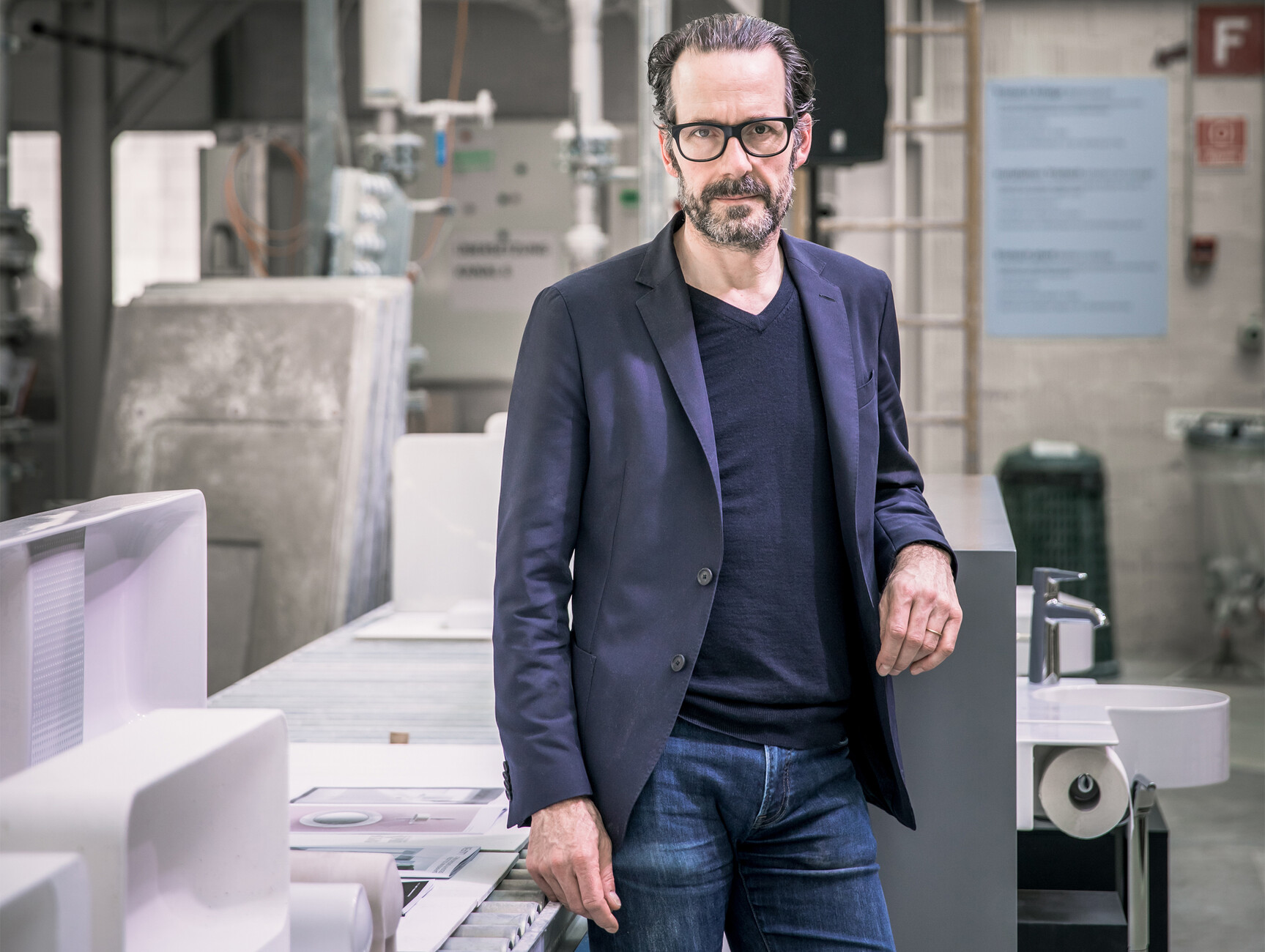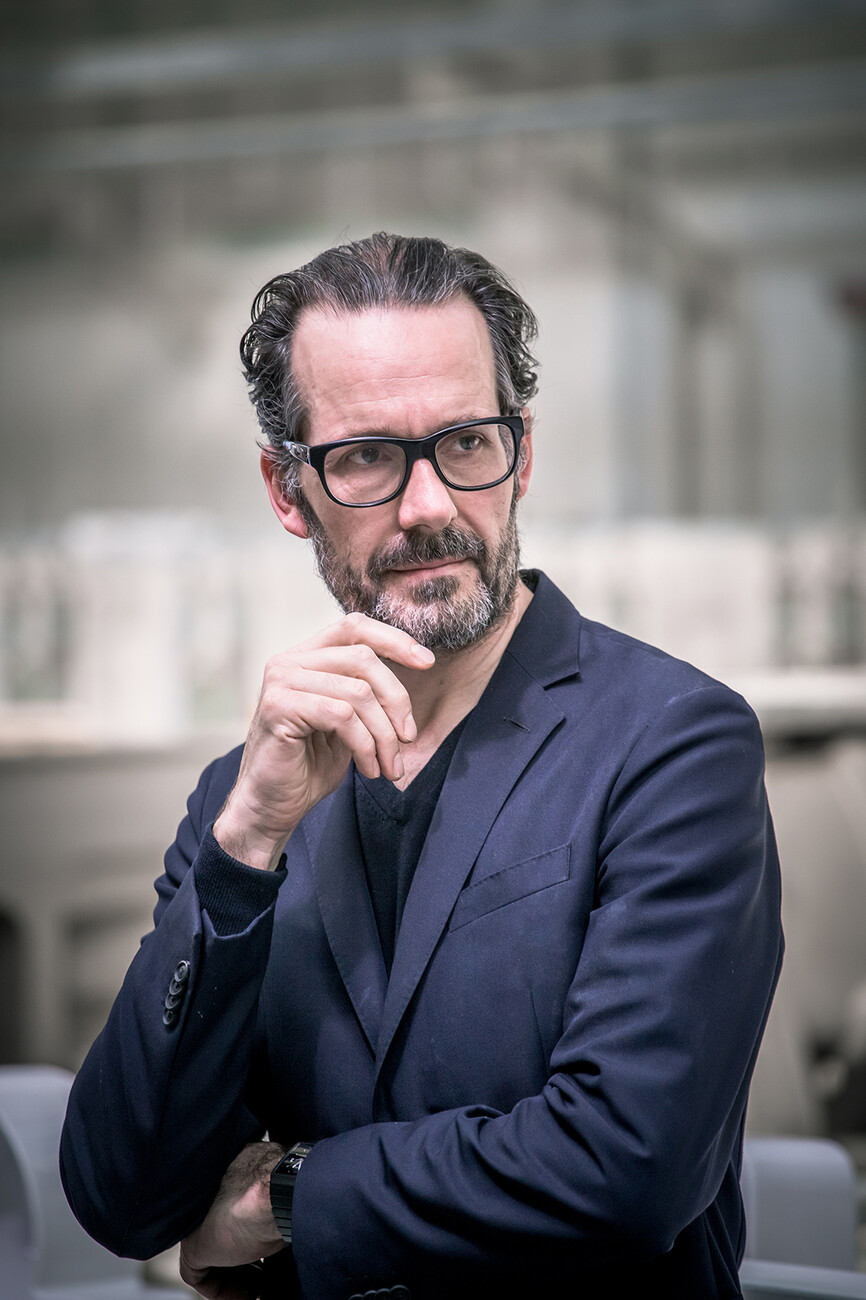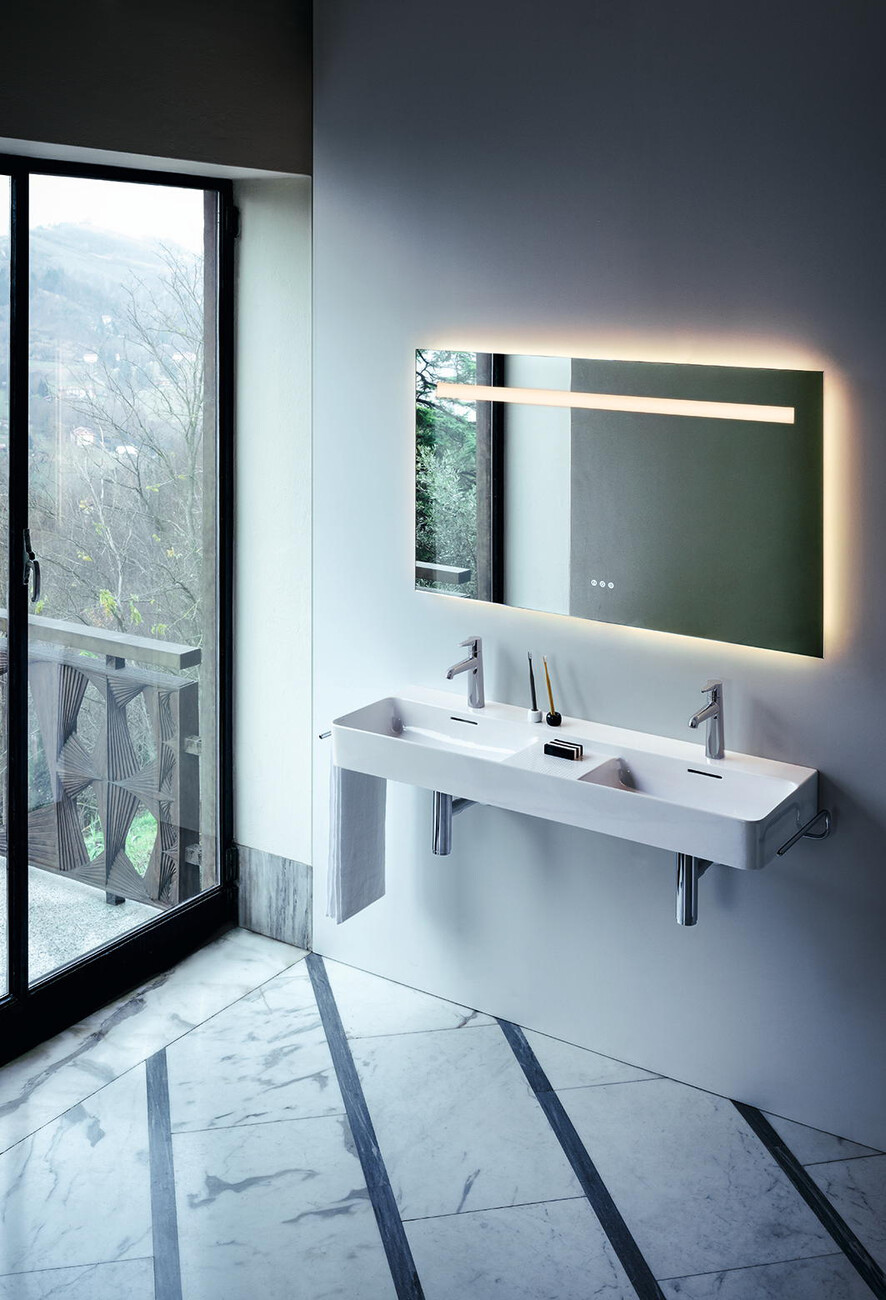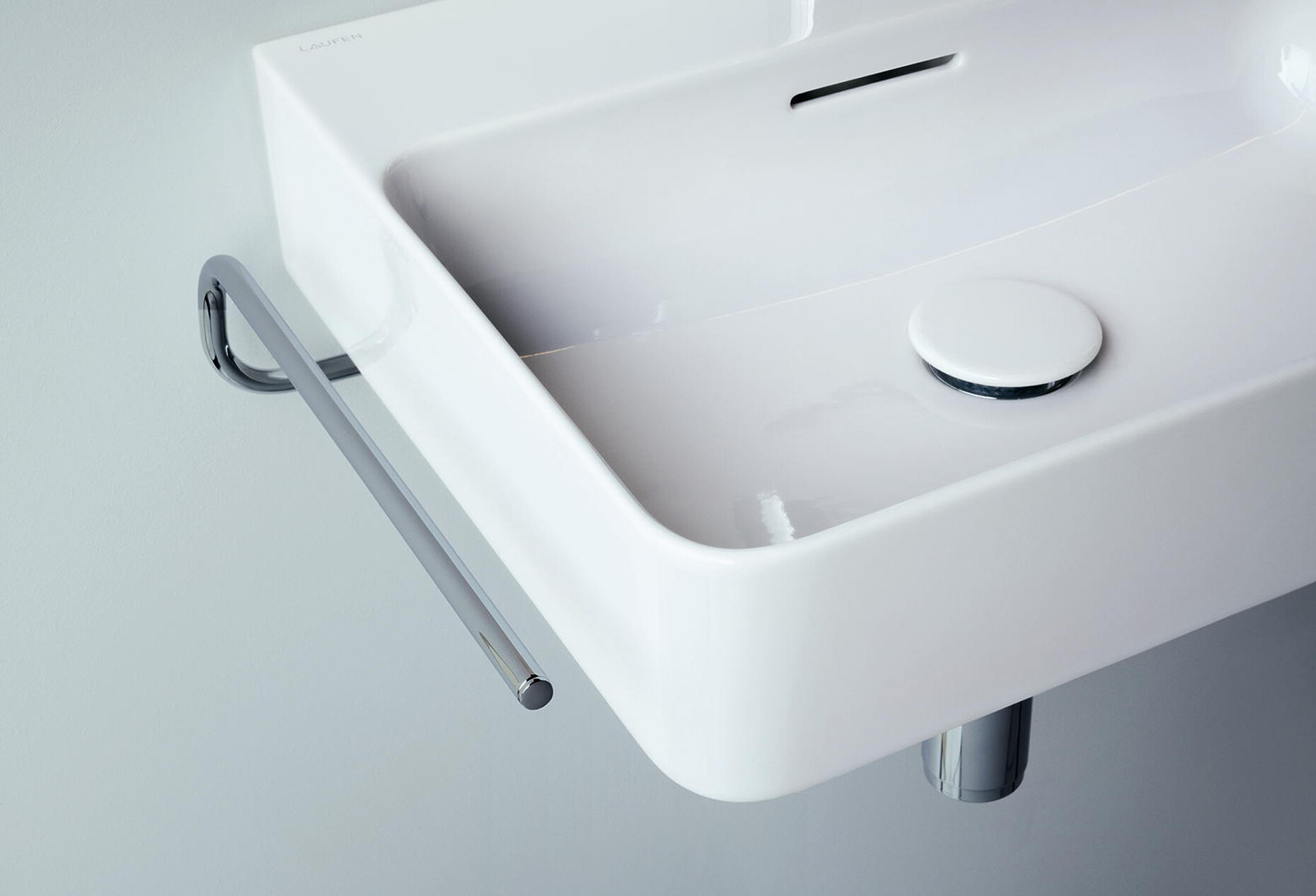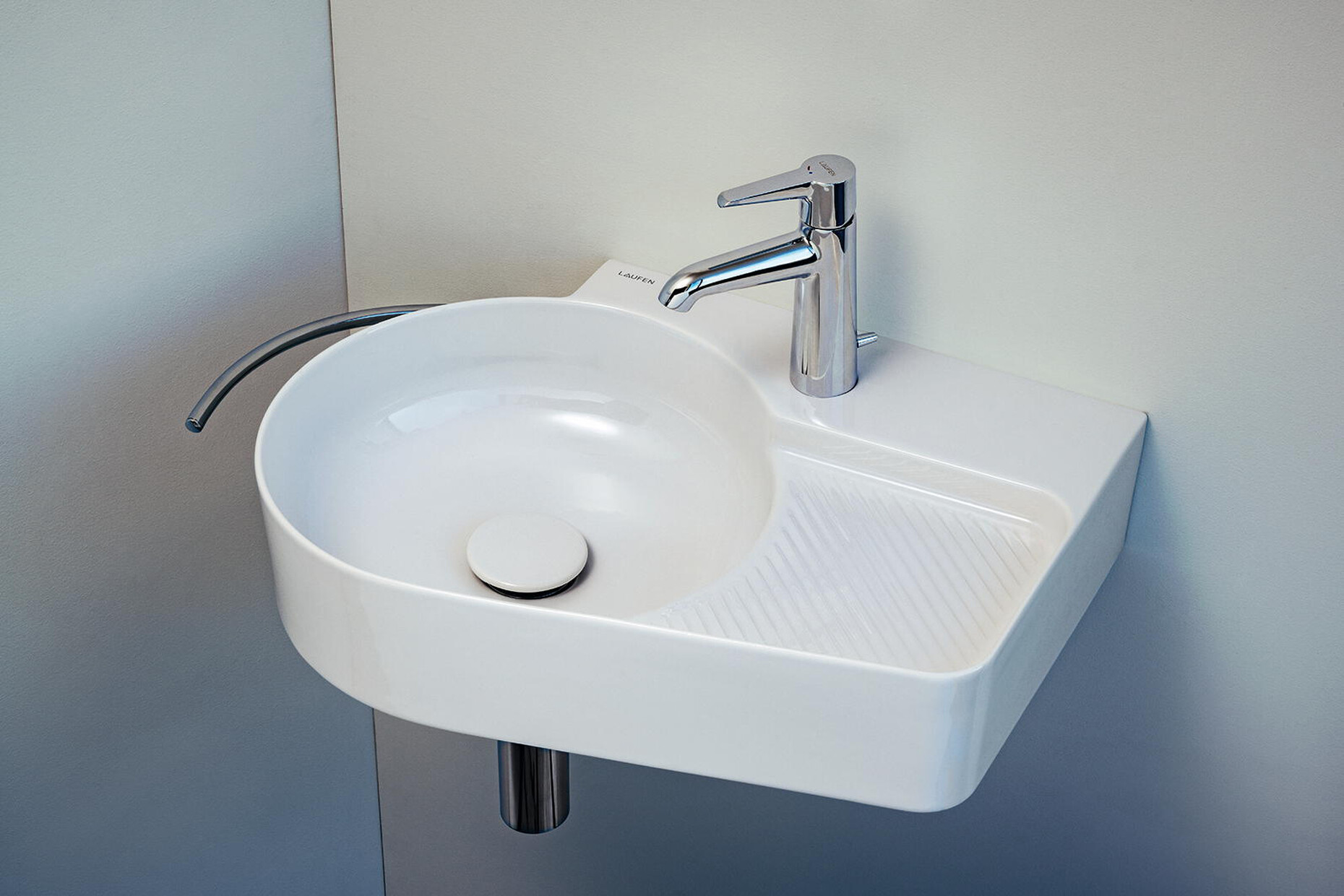STYLEPARK LAUFEN
Playful industrial design
Fabian Peters: For sanitary manufacturer Laufen you have just extended the “Val” family by adding a series of small-format washstands. Does this addition to the collection also have a programmatic aspect?
Konstantin Grcic: Yes, it certainly does. As a designer I find small spaces really fascinating. I immediately have very specific situations in mind: the small bathroom, the guest toilet – rooms that people seldom focus on. These are the spaces I have addressed.
The new small washbasins and stands for the “Val” collection do not have the uncompromising functionality in the design vocabulary otherwise so typical of the existing models. What is the reasoning behind this development?
Konstantin Grcic: When Laufen first invited me to work with their Saphirkeramik material some five years ago my first designs were very exploratory, very playful, very free. For the new small washbasins we decided to take up once again the early designs with their playful and intuitive elements.
Actually, I feel that there is a very much stronger industrial design character in these small forms than in the large items.
Konstantin Grcic: Perhaps that has to do with our experience from the two previous design cycles for “Val”. We have deepened our dialog with the firm tremendously, were much more strongly in the topic than before. Moreover, this time we set ourselves a very specific task and then solved it using a grammar that we had already developed. Not only was that great fun. It also produced additional products. For example, you always have the problem of needing to drill into the tile to attach a towel holder. Why not use the washbasin that is already on the wall anyway to affix a holder that becomes part of the overall design? In that sense I am an industrial designer through and through and not an interior designer.
Your installation at Orgatec 2018 explored flexibility, the self-appropriation and interpretation of spaces. Can these topics also be transferred to the bathroom area?
Konstantin Grcic: Oh, most certainly in specific situations. For example, increasingly hotels no longer have a wall separating the bathroom area from the bedroom. Naturally, we have this option in our homes, too. In many public areas, be they offices or restaurants, they no longer have separate areas at least for men and women to wash their hands. People have long since got used to that. In other words, a number of taboos and reservations long attached to the sanitary area are disappearing and that allows a more flexible use of space.
“Micro living” is a much-discussed topic today. The question that still remains to be answered is whether living spaces will remain smaller as a result of urbanization – and if so how we are to deal with the situation.
Konstantin Grcic: My belief is that this trend, and it already exists, will certainly persist. The question is: Where do you place your priorities? If I have a say in the planning of my small apartment I can decide whether the bathroom is so important to me that I want it to take up a relatively large part of this small flat. But I can also decide that the smallest possible space is good enough, that small living spaces become possible by having public areas advance at the same time. The kitchen is one example of this. Often in large cities having a large kitchen makes no sense at all because I am never home anyhow to cook a meal. Outside there is a huge offering of restaurants or cafés that provide me with a different version of the activities “cooking and eating”. You must not consider the shrinking of the bathroom in isolation but rather see it in connection with other things like a spa or fitness club in the building. You relocate things from the private sphere to the public domain or vice versa.
